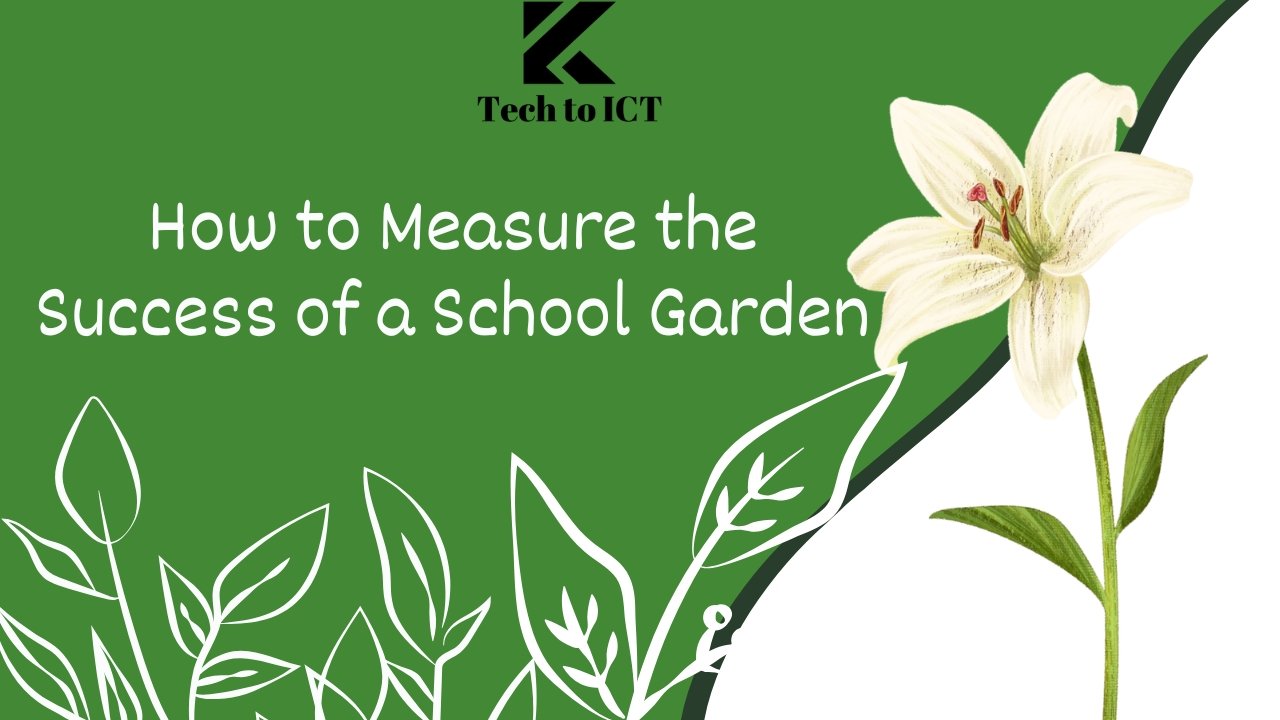School gardens are becoming vital parts of education, offering hands-on learning experiences, a deeper understanding of nature, and a stronger sense of community. But one question educators often ask is: how to measure the success of a school garden?
To truly evaluate its impact, you need to look beyond just the plants. From student learning to sustainability and community engagement, success comes in many forms. In this guide, we’ll show you how to use both data and storytelling to paint a complete picture of your school garden’s value.

Define the Garden’s Purpose Before Measuring Success
To effectively determine how to measure the success of a school garden, you first need to understand why it was created. Every garden is different, and success depends on aligning your evaluation with your core goals.
Educational Goals
- Science: Deepen students’ understanding of biology, soil science, and ecology.
NGSS Science Standards for Gardening - Math: Apply real-world math in measuring, charting growth, and calculating yield.
- Nutrition: Promote healthy eating and introduce fresh produce.
MyPlate in the Garden – USDA
Environmental Goals
- Sustainability: Teach eco-friendly habits like composting and organic gardening.
EPA Composting at School - Biodiversity: Encourage native plants and pollinators.
- Climate Resilience: Reduce food miles and carbon emissions.
Food Miles & Climate Impact – NCAT
Community and Social Goals
- Engagement: Involve families, teachers, and volunteers.
How School Gardens Engage Families – KidsGardening - Well-being: Support students’ social-emotional growth through nature connection.
Green Schoolyards America - Beautification: Improve the look and feel of school environments.
Tangible Metrics: Tracking What You Can Count
When looking at how to measure the success of a school garden, tangible results provide essential data.
1. Monitor Plant Growth and Yield
- Height & Spread Logs: Track weekly plant heights.
- Harvest Weights: Weigh produce regularly for yield analysis.
- Visual Records: Use time-lapse photos to observe growth stages.
- Digital Tools: Use Garden Journal or Google Sheets to document your findings.
2. Evaluate Soil Health
Healthy soil is the root of a thriving garden. Conduct tests for:
- pH and Nutrients: Try SoilKit or home kits for fast analysis.
- Organic Matter: Measure compost levels for fertility.
- Soil Texture: Simple sedimentation tests give insight into structure.
You can also submit samples to a local extension office.
3. Track Water Usage
- Install Meters: Monitor overall water input.
- Log Irrigation: Record timing and frequency.
- Rainwater Collection: Use rain barrels to measure gallons saved.
Rainwater Harvesting Guide – EPA
Intangible Metrics: Measuring What You Feel
Not all success shows up in numbers. To fully understand how to measure the success of a school garden, you must consider personal growth, learning, and environmental change.
1. Student Learning
- Pre- & Post-Learning Tests: Check knowledge growth.
- Student Journals: Reflective writing shows what students value most.
- Teacher Observations: Track problem-solving, teamwork, and curiosity.
📹 Watch this real-world example of a school garden boosting student learning:
School Gardens Improve Education – YouTube
2. Community Involvement
- Volunteer Hours: Log help from families and staff.
- Donations: Track materials or funding received.
- Community Events: Count participation in harvest festivals, garden nights, etc.
- Surveys: Use Google Forms to collect parent and teacher feedback.
3. Environmental Impact
- Biodiversity Monitoring: Use iNaturalist to document pollinators and species.
- Carbon Benefits: Estimate emissions saved using local produce.
- Composting Records: Track waste diverted from landfills.
Zero Waste Schools Toolkit – Eco-Cycle
Tools and Resources to Support Evaluation
Success is easier to track when you’re equipped with the right tools.
Digital Apps
- Garden Journal – For recording harvests, soil data, and weather.
- iNaturalist – For wildlife and plant tracking.
- PlantSnap – Identifies plants via photo recognition.
↪ Download PlantSnap
Soil and Garden Tools
- Luster Leaf Soil Test Kits – Affordable and easy to use.
- Cornell’s Soil Health Manual – Professional guidelines for deeper testing.
Educational Resources
- KidsGardening.org – Practical resources, curricula, and grants.
- USDA Farm to School Toolkit – A step-by-step guide for school-based gardening.
- The Edible Schoolyard Project – A rich model for education-based gardens.
Success Stories: What Others Are Doing Right
Edible Schoolyard Project (Berkeley, CA)
This long-running initiative combines nutrition, science, and sustainability. They measure everything from academic performance to biodiversity gains.
Learn More
Growing Healthy Schools (UK)
Schools use a scoring system that tracks health, environment, and learning goals. Their reports drive decision-making and funding.
School Garden Network (US)
Offers a self-assessment tool to track learning gains, food production, and wellness improvements.
These case studies offer clear roadmaps for anyone looking to learn how to measure the success of a school garden effectively.
Best Practices for Measuring Success
To wrap things up, here are key strategies that consistently work:
- Start with Clear Goals – Match your evaluation with your mission.
- Track Progress Over Time – Year-to-year comparisons show growth.
- Use Both Numbers and Stories – Data tells one side, reflections tell the other.
- Include the Whole Community – Parents, students, and teachers all offer valuable insights.
- Report Your Findings – Share results with your school board, PTA, or local press to build support.
Final Thoughts: Growing with Purpose
Learning how to measure the success of a school garden is as important as learning how to plant one. With a blend of tangible results and heartfelt stories, you can prove your garden’s value while uncovering ways to improve.
Whether your garden is a small box of herbs or a sprawling edible landscape, success lies in its impact on the students, the community, and the environment it touches.
To explore a full framework for measuring school gardens, we recommend visiting:
KidsGardening.org’s Garden Evaluation Toolkit – It offers sample metrics, tools, and downloadable forms tailored to school gardens.




Leave a Reply